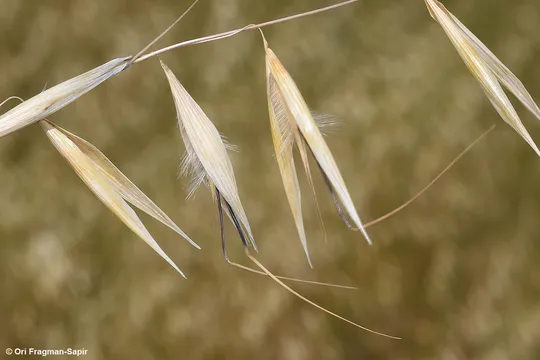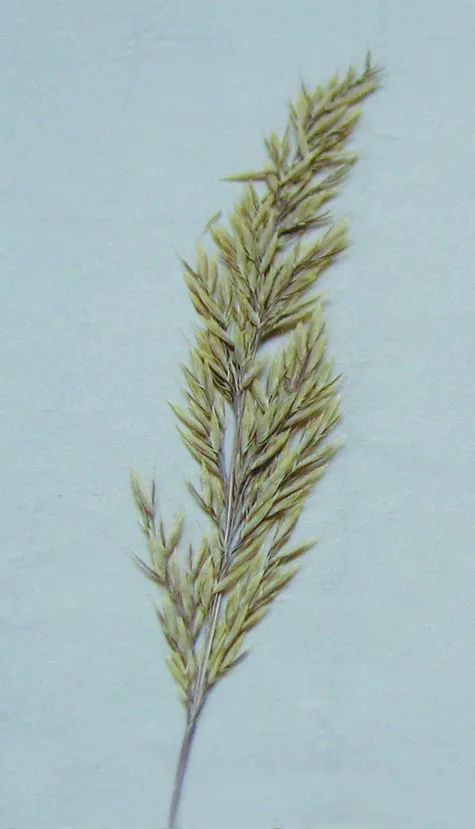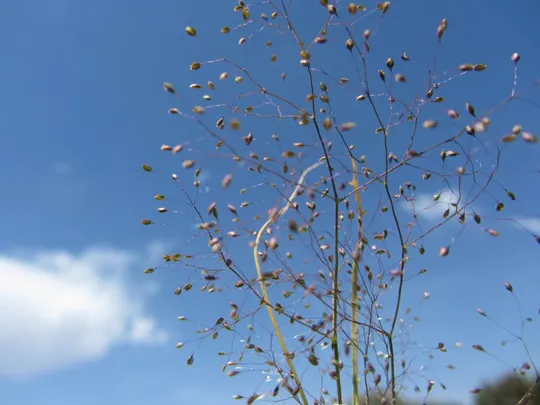Wild oat sp.
Avena clauda
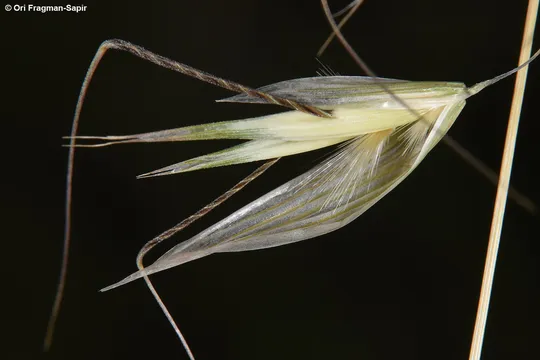
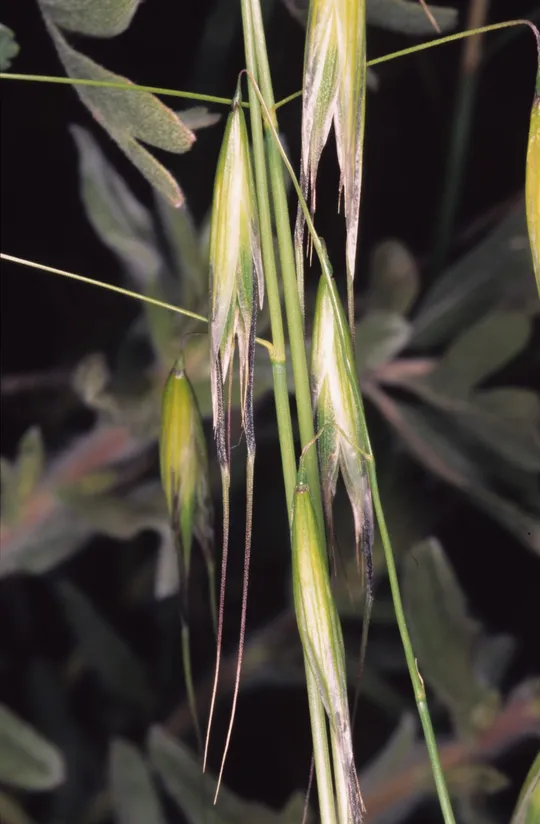
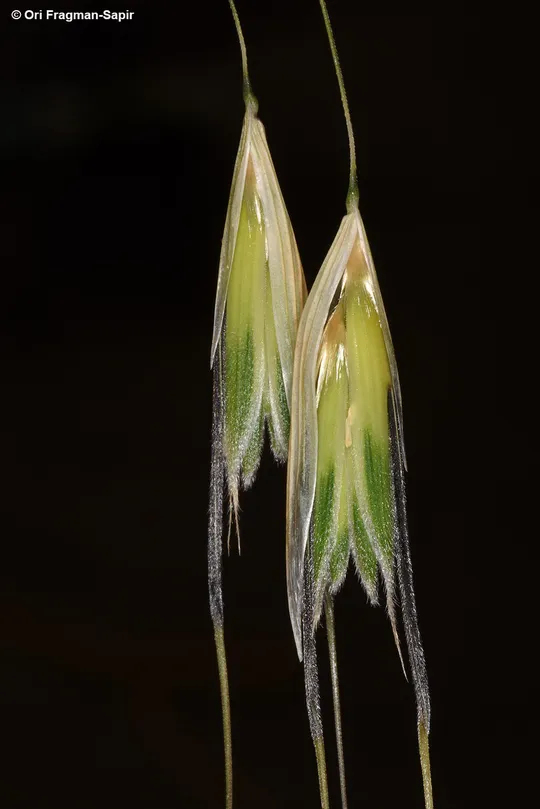
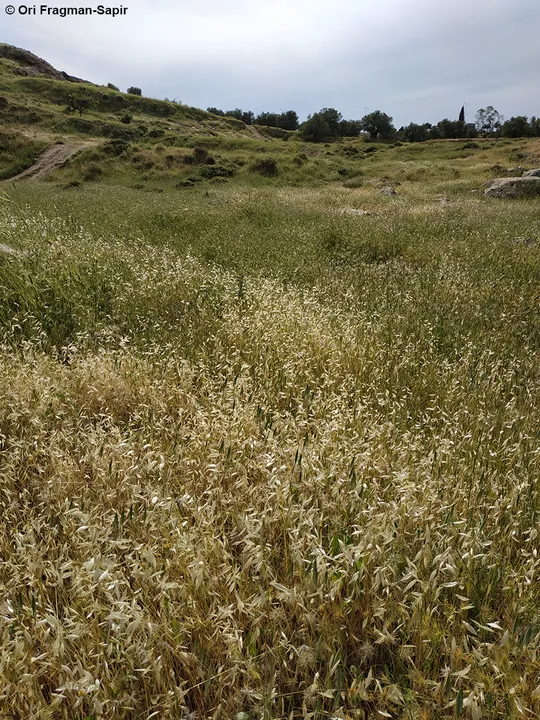
Avena clauda grows in the Lower
Galilee, Judean Mountains and the Samarian Desert at one site in each region. It
is an unpretentious plant, similar to other common Avena species and is
difficult to identify. Therefore, it is estimated that it is found on ten
sites. In the Lower Galilee it survived at the Golani Junction, but disappeared
from Gesher and from Giv'at HaMore. In the Samarian Desert it is found only in
the Um Zuka Reserve. In the Judean Mountains it is extinct in the Jerusalem and
the Hebron areas, but survived in the Yatir area. In total it is extinct in four
sites.
Mediterranean Sarcopoterium
spinosum scrubland and transition zone scrublands as well as in grassy areas
at scrubland edges.
The genus Avena
consists of about 25 species commonly found in Europe, temperate Asia and North
Africa. A. clauda is extremely similar to other Avena species,
although it is shorter. Nevertheless without examining its unequal glumes it
cannot be distinguished from them, and may actually be much more widespread
than recorded. A. barbata has equal glumes and its
inflorescence is large and more branched, and A. sterilis
has larger spikelets. In the transition zone and in the desert another species
is abundant – A. wiestii, which is similar
and extremely close to A. barbata, but has
smaller spikelets. A. sterilis was cultured
and is used as a food plant. The cultured type is named A. sativa and often appears at the edges of agricultural fields,
though not in large quantities. Viable A. sativa
populations are not usually found in the wild. Some of the cultured species are
characterized by spikelets that have no awns. A. fatua
is a wild species that grows mainly in Europe and is derived from A.
sativa.
A. clauda is not the original
species that was cultured, however it is quite close to it, and joins a long
list of cereal crops and other plants growing wild in the Fertile Crescent and
in Israel that are wild relatives of cultivated plants. The wild populations of
these species, unlike their cultured relatives, are genetically diverse and
constitute a major genetic resource that can be isolated and even used to transfer
different resistances, e.g. resistance to drought, salinity, diseases, etc., to
cultured plants.
·
The number of
sites where Avena clauda once grew decreased to less than half of what was known
in the 1960s. However, site documentation, with the exception of Jerusalem, is only
updated to the end of the 1970s.
·
Construction has
led to the extinction of the A. clauda populations in open areas in Jerusalem.
·
A. clauda is protected in the Um Zuka Reserve in the Samarian Desert.
·
The plant is
common in the world and is not globally endangered.
A specific survey to locate Avena clauda populations should be
conducted I to obtain an updated picture regarding its status and
to formulate a management program.
Avena clauda is a widely distributed
plant that grows from Central Asia, the Caucasus and Western Asia (including
Israel) and up to North Africa.
Avena clauda is a rare
cereal grass that is difficult to identify in the field. It grows in
Mediterranean and transition zone scrubland.
An additional survey is required to locate populations and to obtain an
updated assessment of its status in Israel.
Current Occupancy Map
| 1000 squre meter pixel | 5000 squre meter pixel | 10000 squre meter pixel | |
|---|---|---|---|
| number of observations | 0 | 0 | 0 |
| in total pixels | 0 | 0 | 0 |
| Family | Gramineae |
| Classification | On the endangered species list |
| Ecosystem | Mediterranean |
| Chorotype | Irano-Turanian – Mediterranean -North Africa |
| Conservation Site | Golani Junction / Um Zuka Reserve |
| Rarity |
1
4
6
|
|---|---|
| Vulnerability |
0
3
4
|
| Attractiveness |
0
0
4
|
| Endemism |
0
0
4
|
| Red number |
1
4.2
10
|
| Peripherality | N |
| IUCN category | DD EW EX LC CR EN VU NT |
| Threat Definition according to the red book | Endangered |
 Based on:
Based on:

